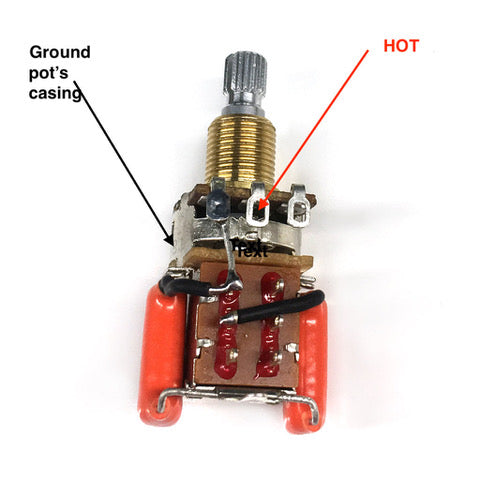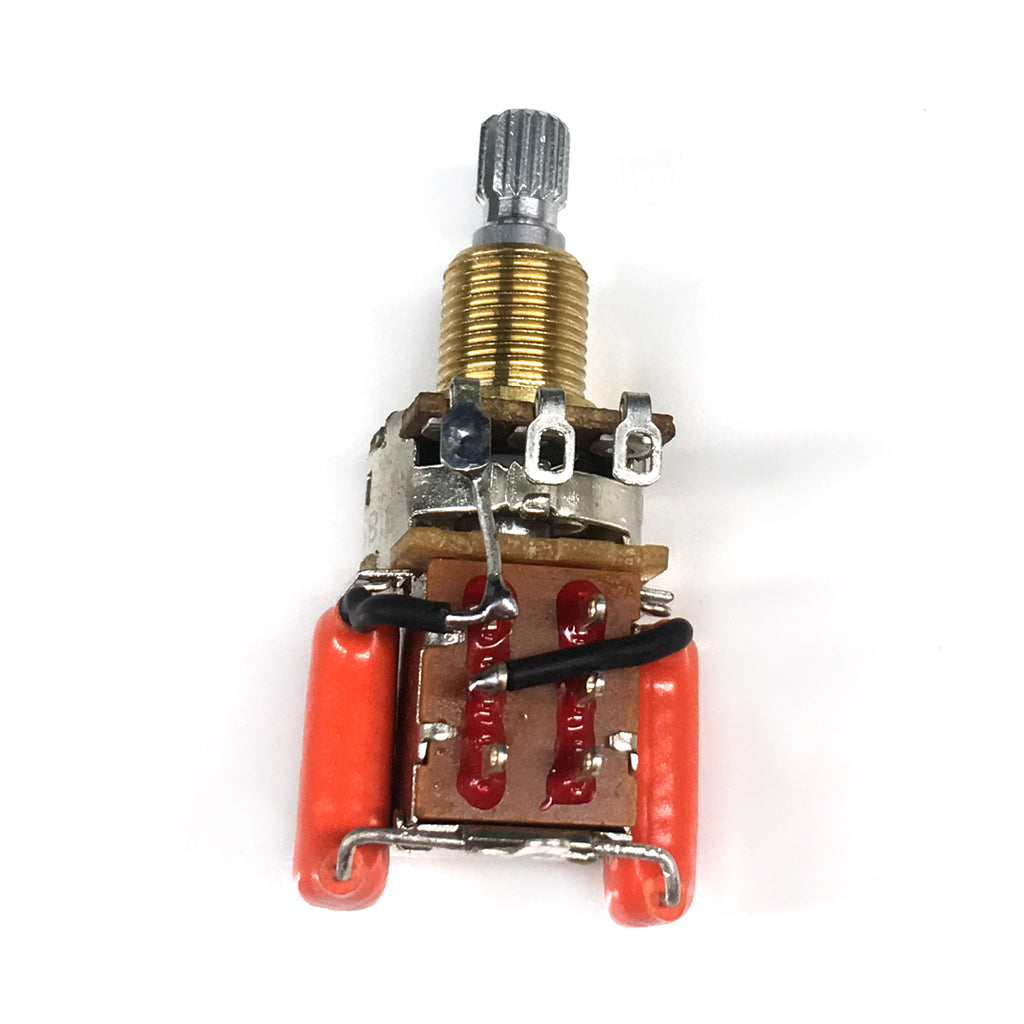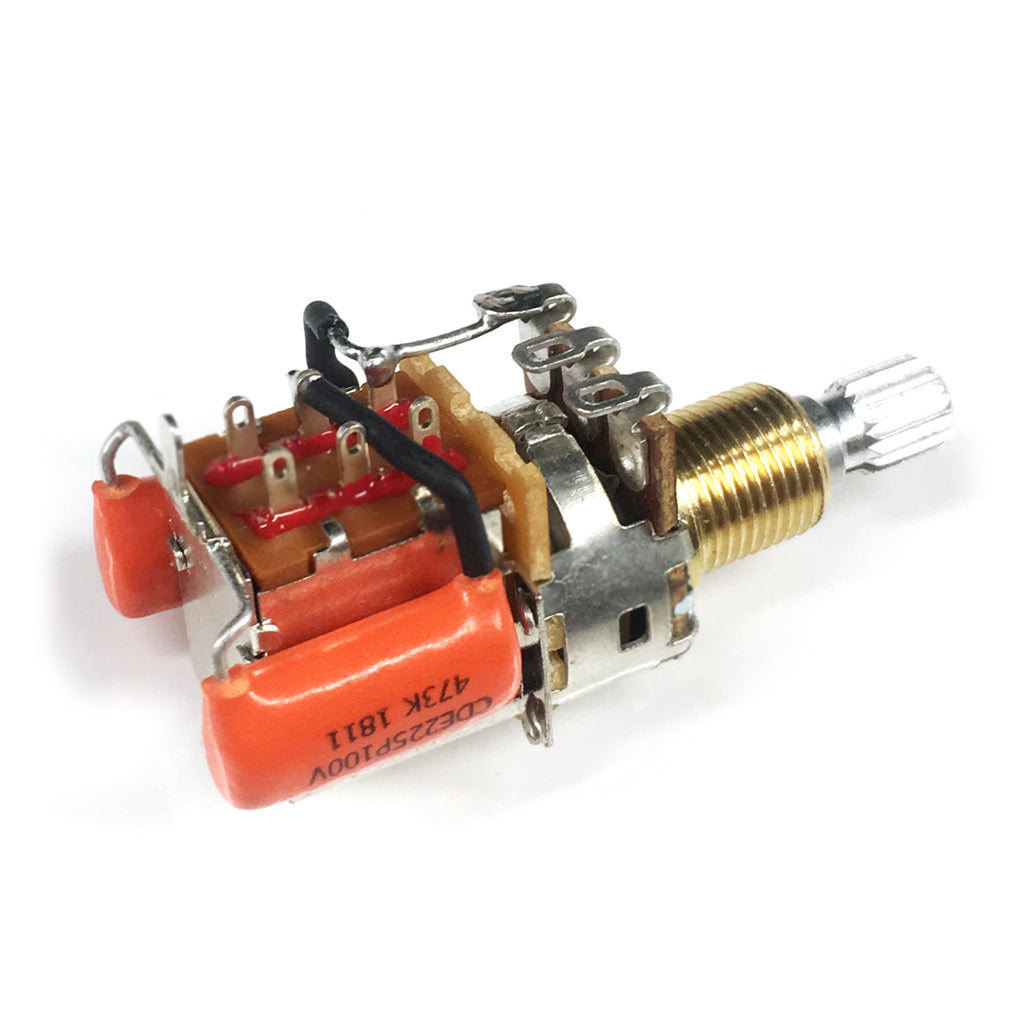ACINONYX
Bass Pickups & Preamps
Guitar Pickups & Pedals
Accessories & Swag
This .047uf-.1uf cap switch is an orange, two headed monitor lizard that speaks a simple, southrange grit atop a subtle, simmering murk. Just as the heart might subtly react with ancestral repulsion at the sight of an ancient reptile vibrating intensely just above the stream, so too does this twinned switch deliver an equal bite of private phenomenon. It provides a convenient way for players to navigate a space between the temperate and traditional character called .047uf, and its slightly more dramatic and swampier sibling called .1uf. More specifically, the .047uf allows remnants of the high end to beam through; and if perceived by the player as not so tangible a thing as a direct beam, then perhaps more like memories of the egg days leaking into the mind of an incapacitated dragon doggypaddling the bayou. In the case of the .1uf cap, it is the hand that yanks the Thing just beneath the bright-bound surface. Everything capitulates an electric, light-drowned mud, and in this darkening forms the aperture through which you might dig, with intention, into the flow of the tune. Dive toward the murk.
Hint: besides these two characteristics, we invite you to seek the resonant peak—an ephemeral ridge as vibrational as it is dissipative. Instructions: roll off all caps to enable an understanding between the two, and allow the signal to flow through your rig with only a sliver of viscera painting its fullbodied back. This is the road to the peak. Follow it wisely. If you dare to look over, don’t hesitate. React.Whiptail! Like a lizard.
Technical Details:
- 250k Push-Pull Potentiometer
- .047uf capacitor as baseline (pushed in)
- .1uf (~.047uf+.047uf) (pulled)
- The rest: solder, wire, and simplicity.
Wiring:

A Bass Player’s Dive Toward the Murk:
You find yourself stage left, threatened by the condition of representing the low end position. Between harsh lighting and the energy of the crowd, you can see the crest of the event’s climax percolating in the sinews of the sonic scald deflecting between crowd and artists. The tune you are playing has reached its pre-peak point; that place where a song deteriorates into a fragmented soup of an interlude barking at the feet of a beast clawing for catharsis. This is an integral point—a song’s inner animal approaching the peak, the hook, the drop. Less experienced players might shrug at the chance to excavate such a mine of possibility. They’ll do nothing for the requiem of sound—zero manipulations of tone for the enhancement of the ridge to come. That, or they might not see it at all. Catching a chance like this requires a trained ear, an eye for identifying the particular way a song bubbles and bounces in a space whose primary occupant is vibrating human flesh. It comes down to having the courage and knowhow to accept the invitation, and enact a significant interruption that might take the atmosphere you are inventing to an opaline persistence: a place somehow both dark and vibrant.
However, you are no naive tone brute. Equipped with the Nordy .047uf-.1uf double tone pot, you have the capacity for a radical drop. Alongside drums, guitar, vocals, etc., you are working your way toward to the doorstep of what exegesis cannot even begin to describe. The critical point is on top of you now, and the center will not hold. You have a few choices: you are already filtering a middy density through the .047uf cap, and it is doing a fine job of retaining an acceptable tonal shelf life. You couldstay there—dial in a comfortable buffer to moderate the eye of the climax just over the ridge, and sleep soundly in the conviction that you’ve played well. But no… this will not do. You need to go visceral; to dig the muddy underwidths where mid-level ground bleeds a dark, rich murk. So you burn all bridges leading to the high end, draw the head of the .1uf cap, and dive head first into the electric swamp. However, to top it all off—consider one last move: roll off caps so that pure signal is carved by only a sliver of .1uf tar, and the animal will turn over its pineal eye.
And bingo, you have it! The crescendo you’ve been waiting for has become contiguous with the skin of the tune, and the fragments of the interlude adjust perfectly on the vertebrae of catharsis. You hit the critical note, the drop, blood boiling with loss of self, and there it is: the Resonant Peak. It is a tonal ridge so reactive only Thelma and Louise might know its true gravity. Everything is perfect, strangely fateful, and slow. But like all things, change spills into whatever is next, and you carry the song to its end without crisis, happy about the contribution you’ve made to the portrait of what it means to exercise the deep end of tone.
You may also like
SUBSCRIBE TO NORDSTRAND NEWS
Sign up to get the latest on new releases, artists and more …








